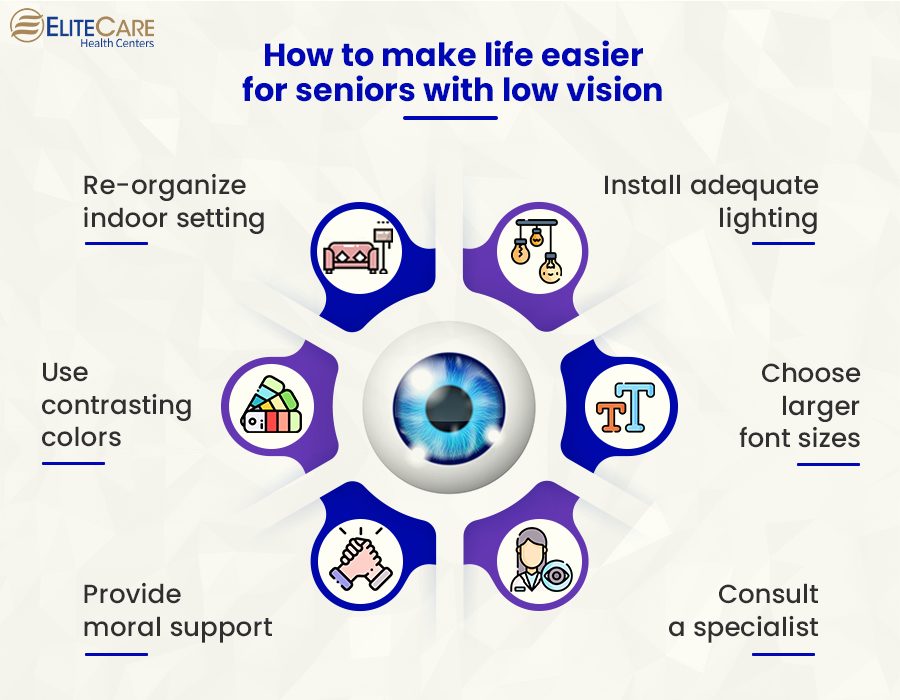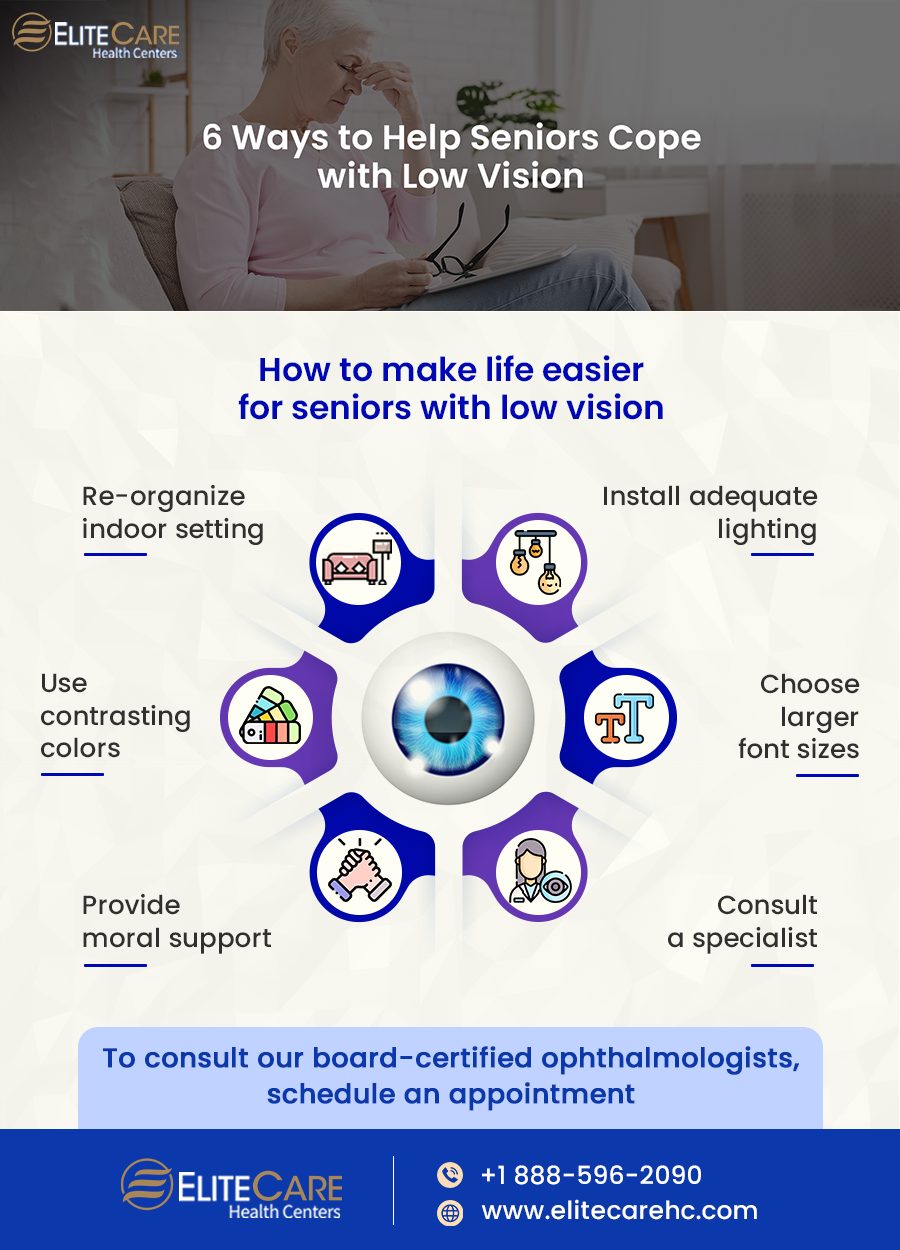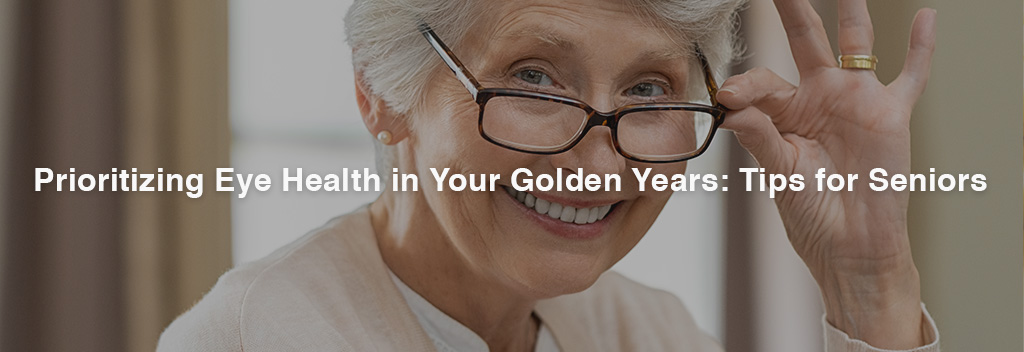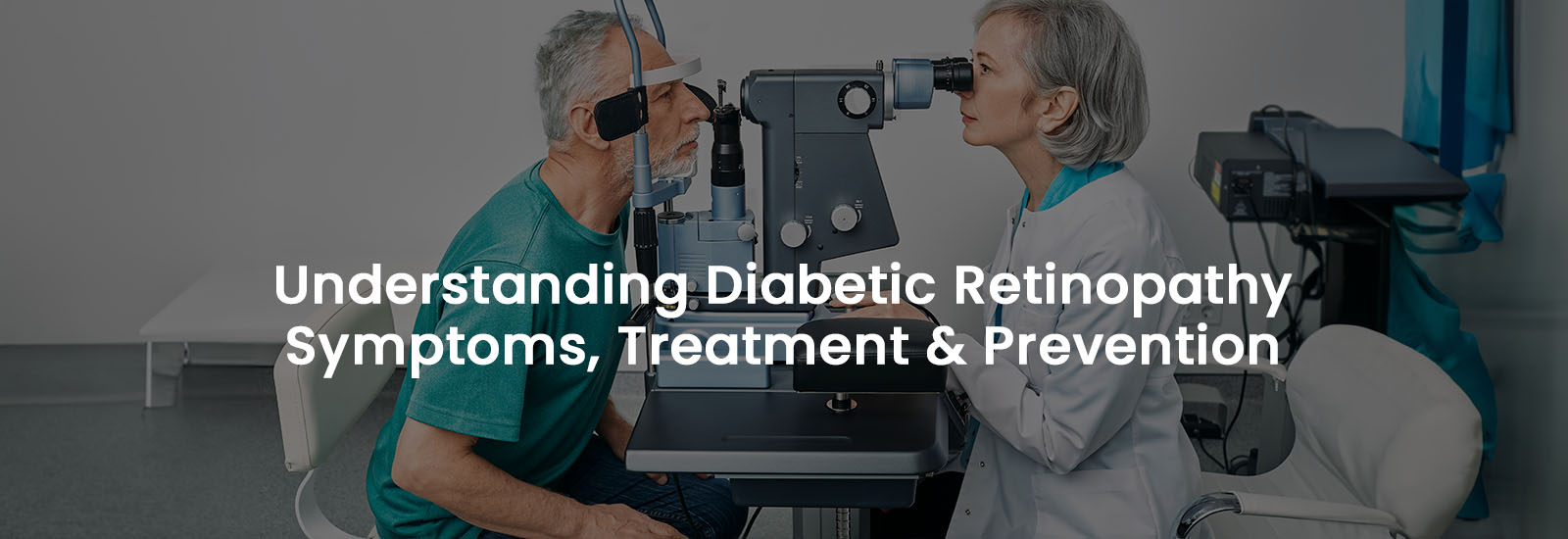
What is low vision?
Low vision is a vision impairment that typically affects a person’s visual acuity or sharpness of vision. If the seniors are having trouble watching television, reading books, or checking the time until they wear glasses, then it indicates low vision-related issues. Seniors with vision impairment have a visual acuity of 20/70 or lower, even after corrective measures such as eyeglasses or contact lenses. Get an eye pressure test done at regular intervals to detect the issues as early as possible.
Presbyopia and myopia are the most common reasons behind compromised vision among the elderly. With presbyopia, seniors lose clarity in their vision up close, while with myopia, they have trouble focusing on distant objects. Sometimes, different eye diseases such as cataracts, glaucoma, age-related muscular degeneration (AMD), and diabetic retinopathy can also contribute to loss of vision – if left untreated for a long time. These problems are generally detectable during routine eye-test.
Read More: Top 10 Men’s Health Checkups and Screenings
Types of Low Vision
There are several additional types of low vision that a senior may experience. The most common are:
- General, uncorrectable blurred vision
- Central vision loss, or the inability to see objects from the center of the eyes
- Peripheral vision loss or the inability to see objects with the corners of the eyes
- Night blindness refers to the inability to see things in low or dim lighting
How to make life easier for seniors with low vision

1. Re-organize indoor settings
In order to make navigation easy and safe, indoor settings may need to be modified to include moving furniture around or keeping important objects in designated areas. It is crucial for seniors to know the whereabouts of their belongings to find objects easily when they have limited vision.
In addition, the risk of fall-related injuries is significantly higher for seniors with visual impairment. Therefore, remove any objects that increase the risk of tripping, such as electrical cords or slippery rugs. It is highly recommended that individuals with low vision use an Automatic Fall Detection system that works as an added layer of protection for seniors.
2. Install adequate lighting
Make sure to keep indoors well-lit and create a setting with high contrast and reduced glare. Use specialized lamps or bulbs and cover reflective surfaces when possible. Try to equalize indoor and outdoor lighting by keeping the lights on during the daytime. It will help improve the functionality of the elderly. Besides, don’t choose large discrepancies in lighting, such as a bright lamp shining in a dark room.
3. Use contrasting colors
Maximize the functional vision of seniors by changing the interior setting of the house. Choose furniture and doors with contrasting colors to make it easier for seniors to recognize them. Highlight the edges of stairs and countertops with contrasting colors to help improve safety for them.
A few ways that can help increase contrast in an indoor setting are as follows:
- Use brightly colored dishes
- Put red tape around the light switches
- Use red paint to create bright spots to help the person line up the “off” button on the gas cooker
- Keep their shoes on a brightly colored mat
- Color code bottles of medication
4. Choose larger prints
Opt for larger printouts of things they regularly use. Getting calendars with large-sized characters or increasing the font-size of the texts on devices by changing settings are some of the easiest ways to help them. If some of these items are not available with larger icons, fonts, or numbers, use electronic magnification units to help seniors read bills, write checks, or even fill an insulin syringe.
5. Provide moral support
As seniors age, their mental health is often affected by vision impairment, causing them to withdraw from activities they once enjoyed. Therefore, it is important for caregivers to help their loved ones by offering them unconditional support and care. It will not only reinforce positive thinking in them but also encourage them to embrace a new lifestyle.
Caregivers can assist them with their activities and take them outdoors to socialize more often. It is crucial to teach them how to perform basic chores in a more effective way to boost their confidence.
6. Consult a low-vision specialist
For seniors with vision impairments, caregivers should consult low-vision specialists before making any changes in their lifestyle. These specialists possess the knowledge and skills to provide customized solutions. There are vision rehabilitation professionals who provide mobility training as well as help the elderly by prescribing low-vision aids.
Summing up
The most crucial issue with loss of vision in seniors is the amount of pressure it creates on their mental state. They often worry about how sight impairments will affect their ability to live independently. Hence, caregivers must help them by suggesting resources that will allow them to remain independent and enable them to complete day-to-day tasks on their own safely and with ease. To receive the best eye care for seniors, visit the nearest EliteCare Health Centers and schedule an appointment.






